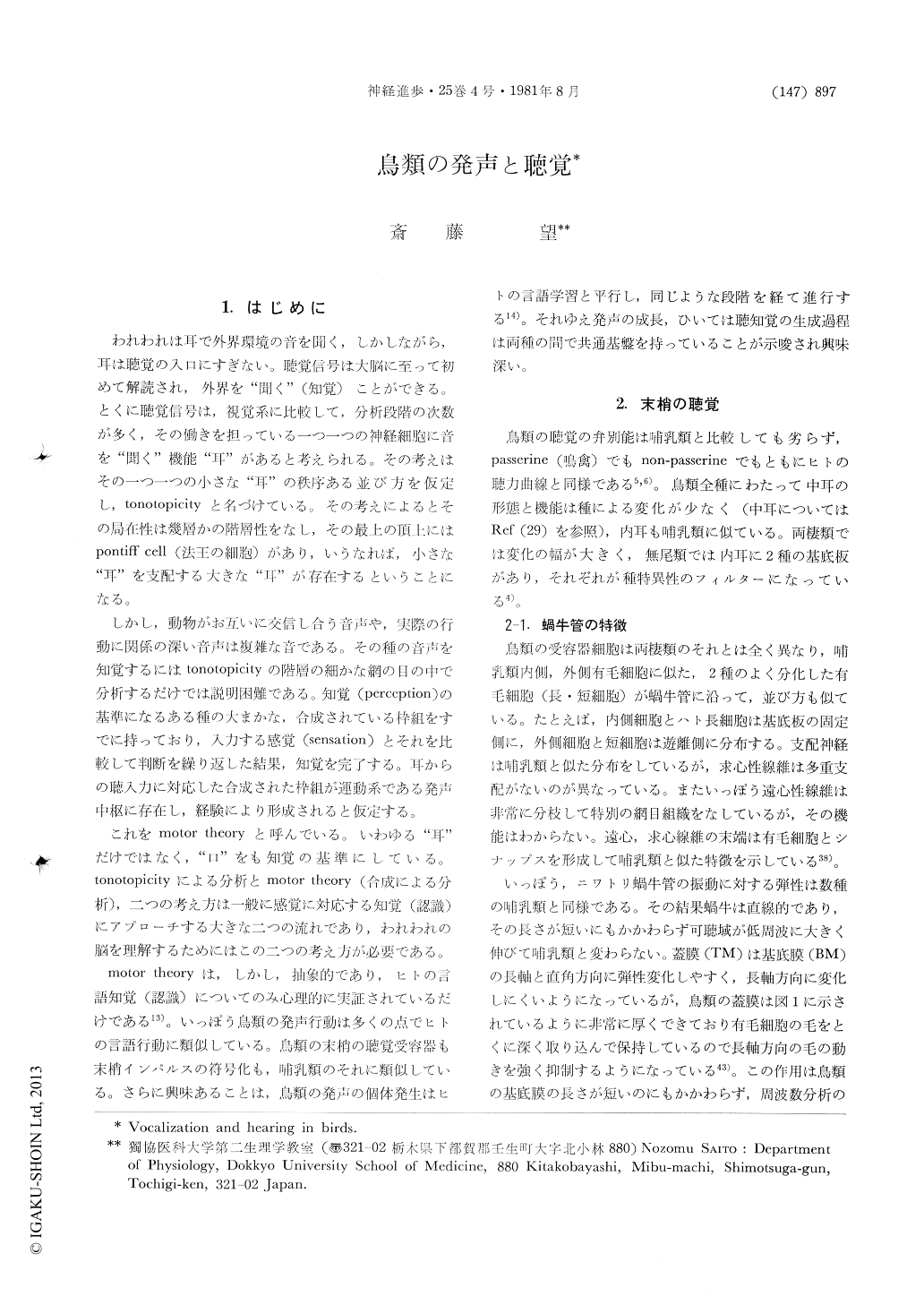Japanese
English
- 有料閲覧
- Abstract 文献概要
- 1ページ目 Look Inside
1.はじめに
われわれは耳で外界環境の音を聞く,しかしながら,耳は聴覚の入口にすぎない。聴覚信号は大脳に至って初めて解読され,外界を"聞く"(知覚)ことができる。とくに聴覚信号は,視覚系に比較して,分析段階の次数が多く,その働きを担っている一つ一つの神経細胞に音を"聞く"機能"耳"があると考えられる。その考えはその一つ一つの小さな"耳"の秩序ある並び方を仮定し,tonotopicityと名づけている。その考えによるとその局在性は幾層かの階層性をなし,その最上の頂上にはpontiff cell(法王の細胞)があり,いうなれば,小さな"耳"を支配する大きな"耳"が存在するということになる。
しかし,動物がお互いに交信し合う音声や,実際の行動に関係の深い音声は複雑な音である。その種の音声を知覚するにはtonotopicityの階層の細かな網の目の中で分析するだけでは説明困難である。知覚(perception)の基準になるある種の大まかな,合成されている枠組をすでに持っており,入力する感覚(sensation)とそれを比較して判断を繰り返した結果,知覚を完了する。耳からの聴入力に対応した合成された枠組が運動系である発声中枢に存在し,経験により形成されると仮定する。
Abstract
The audibility curves of the passerines and non passerines are similar to those of man 6), while pigeons are now known to be sensitive to infra-sound46). The vocal frequency range of songbirds tends to match frequency responses of auditory neurone9). There have been some data regarding structural features of the ear of birds that might account for their exceptionally good hearing and their responses to "biological relevant" sounds. Avian receptor is far from a kind of that of lower vertebrate, anuran whose inner ear contains two distinct organs tuned to different species-specific frequency ranges4).

Copyright © 1981, Igaku-Shoin Ltd. All rights reserved.


